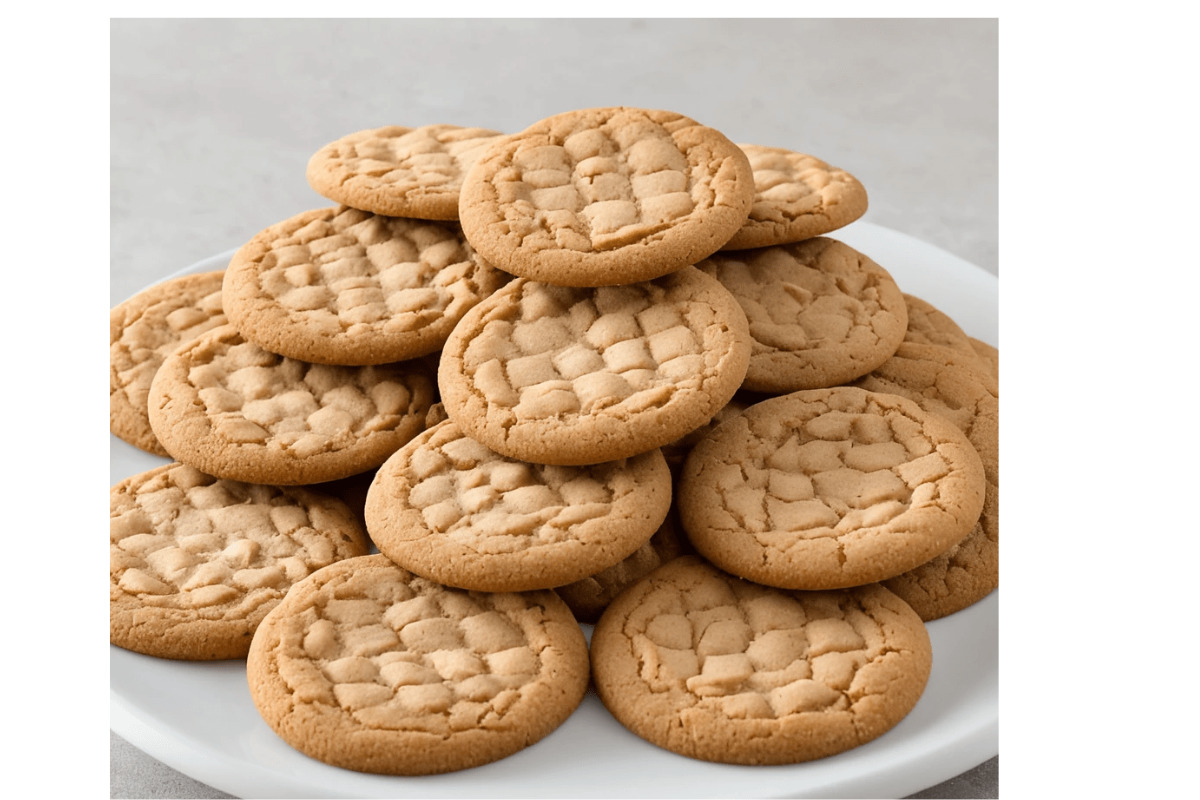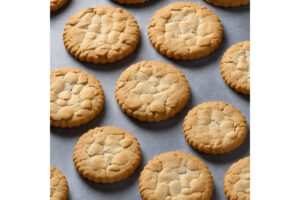Why Are My Crisco Cookies Flat? Understanding the Causes and Solutions
Baking cookies is a delightful experience, but nothing can be more disappointing than pulling out a batch of cookies from the oven and finding them flat and lifeless. If you’ve used Crisco and still ended up with flat cookies, you’re not alone. Many bakers face this issue, and it’s often the result of several factors that can be easily addressed. This article will explore the reasons behind flat cookies and provide detailed solutions to help you achieve perfectly fluffy and delicious Crisco cookies every time.
The Science Behind Baking Cookies
Before we dive into the specific reasons your Crisco cookies might be flat, it’s essential to understand the science of baking cookies. Baking is not just about mixing ingredients and applying heat; it’s a chemical process where ingredients interact with each other under heat to create the final product. The key components in cookies—flour, fat (like Crisco), sugar, eggs, and leavening agents—each play a unique role in this process.
Understanding the role of these ingredients can be key to preventing flat cookies. If you’re interested in the broader science behind baking, you might find this guide on cookie science helpful. It delves into how ingredients behave during the baking process.
Flour: The Structure Builder
Flour provides the structure in cookies. When mixed with liquids, the proteins in flour form gluten, which gives cookies their shape and texture. The amount and type of flour used can greatly affect the outcome of your cookies. Too much flour can make your cookies dry and hard, while too little can lead to flat and greasy cookies.
Fat: The Tenderizer
Fat plays a crucial role in the texture and flavor of cookies. Crisco is a type of shortening, which is 100% fat and contains no water, unlike butter. This makes Crisco an excellent choice for achieving tender and flaky cookies. However, the amount of fat and how it is incorporated into the dough can influence whether your cookies spread too much or maintain their shape.
Understanding how fat functions in baking can help you troubleshoot and perfect your recipes. For more detailed insights into the role of different fats and other ingredients in baking, consider reading about the role of leavening agents in baking.
Sugar: The Sweetener and Browning Agent
Sugar not only sweetens cookies but also affects their texture and color. Sugar melts during baking, contributing to the spread of the cookies. The type of sugar used—granulated sugar, brown sugar, or a combination of both—can also impact the cookies’ final outcome. Brown sugar contains molasses, which adds moisture and can make cookies chewier.
Eggs: The Binder
Eggs provide structure and moisture to cookies. The proteins in eggs set during baking, helping the cookies maintain their shape. They also contribute to the cookies’ richness and color. The ratio of eggs to other ingredients must be balanced to prevent cookies from spreading too much or becoming too dense.
Leavening Agents: The Lifters
Leavening agents like baking soda and baking powder are responsible for making cookies rise. Baking soda is a base that reacts with acidic ingredients in the dough to produce carbon dioxide gas, which helps the cookies puff up. Baking powder contains both an acid and a base, and it releases carbon dioxide gas in two stages—once when mixed with wet ingredients and again when exposed to heat.
Understanding how these ingredients interact is crucial for diagnosing why your Crisco cookies are turning out flat. Let’s explore the common reasons and how to fix them.
Common Reasons for Flat Crisco Cookies
1. Incorrect Ingredient Ratios
One of the most common reasons for flat cookies is incorrect ingredient ratios. Baking is a science, and even small deviations from the recipe can lead to significant changes in the final product.
Too Much Fat
Fat in the form of Crisco is essential for tender cookies, but too much can cause them to spread excessively during baking. When there’s too much fat in the dough, the cookies will spread out and become thin and greasy. To avoid this, make sure to measure your Crisco accurately. If your recipe calls for softened Crisco, ensure it’s not melted, as liquid fat will cause the cookies to spread more.
Not Enough Flour
Flour is the backbone of your cookies. It provides structure and helps the cookies hold their shape during baking. If you use too little flour, the dough won’t have enough structure to contain the fat and sugar, resulting in flat cookies. To prevent this, measure your flour correctly by spooning it into the measuring cup and leveling it off with a knife. Avoid packing the flour into the cup, as this can lead to using too much.
Too Much Sugar
While sugar adds sweetness and helps with browning, too much sugar can cause your cookies to spread out too much. Sugar melts during baking, and if there’s an excess, it can lead to overly flat cookies. If your cookies are consistently flat, try reducing the amount of sugar slightly or combining granulated sugar with brown sugar to help the cookies hold their shape.
2. High Dough Temperature
The temperature of your dough before baking can significantly impact how your cookies spread. If your dough is too warm, the Crisco will melt quickly in the oven, causing the cookies to spread out before they have a chance to set.
Room Temperature Dough
Many recipes call for room temperature ingredients, but if your kitchen is particularly warm, this can cause issues. Room temperature butter or Crisco should be soft enough to press a finger into but still hold its shape. If your dough feels very soft or sticky, it’s a sign that it’s too warm and needs to be chilled before baking.
Chilling the Dough
Chilling the dough before baking is an effective way to prevent cookies from spreading too much. By chilling the dough, the Crisco solidifies, which slows down the melting process when the cookies are placed in the oven. This gives the cookies time to set before the fat fully melts. For best results, chill your dough for at least 30 minutes to an hour. If you’re short on time, you can scoop the dough onto the baking sheet and then chill it in the refrigerator for about 15 minutes before baking.
3. Overmixing the Dough
The way you mix your dough can also affect how much your cookies spread. Overmixing can lead to too much air being incorporated into the dough, which can cause the cookies to rise too quickly in the oven and then collapse, resulting in flat cookies.
Proper Mixing Techniques
When mixing your dough, especially after adding the flour, it’s important to mix just until the ingredients are combined. Overmixing the dough can also cause the gluten in the flour to overdevelop, leading to tough and dense cookies. To avoid this, mix the dough on low speed and stop as soon as the flour is incorporated.
4. Incorrect Oven Temperature
The temperature of your oven plays a crucial role in how your cookies turn out. If your oven is too hot or too cold, it can cause your cookies to spread too much or not enough.
Oven Thermometers
Many home ovens run hotter or colder than the set temperature, which can throw off your baking. To ensure accurate baking, use an oven thermometer to check the actual temperature of your oven. If your oven is too hot, the cookies will spread too quickly before they have a chance to set. If it’s too cold, the cookies may not spread enough and could end up undercooked in the center.
Rack Position
The position of the baking rack in the oven can also affect how your cookies bake. Baking on the middle rack ensures even heat distribution, which is ideal for cookies. If you bake your cookies on the top or bottom rack, they may cook unevenly, leading to flat or over-browned cookies.
5. Expired Leavening Agents
Leavening agents like baking soda and baking powder are responsible for giving your cookies lift. If these ingredients are expired or used in the wrong amounts, your cookies won’t rise properly, leading to flat cookies.
Checking for Freshness
To check if your baking soda is still active, mix a small amount with vinegar. If it fizzes, it’s still good to use. For baking powder, mix a small amount with hot water. If it bubbles, it’s still effective. Replace these ingredients regularly to ensure your cookies rise as they should.
6. The Type of Baking Sheet
The type of baking sheet you use can have a significant impact on how your cookies bake. Different materials and finishes conduct heat differently, which can affect how much your cookies spread.
Light vs. Dark Baking Sheets
Light-colored baking sheets reflect heat, while dark-colored sheets absorb it. Using a dark baking sheet can cause your cookies to bake too quickly on the outside, leading to excessive spreading. On the other hand, light-colored sheets promote even baking, which helps prevent cookies from spreading too much. If your cookies are consistently flat, try switching to a light-colored, non-stick baking sheet.
Using Parchment Paper or Silicone Mats
Lining your baking sheet with parchment paper or a silicone baking mat can also help prevent cookies from spreading too much. These liners provide a non


